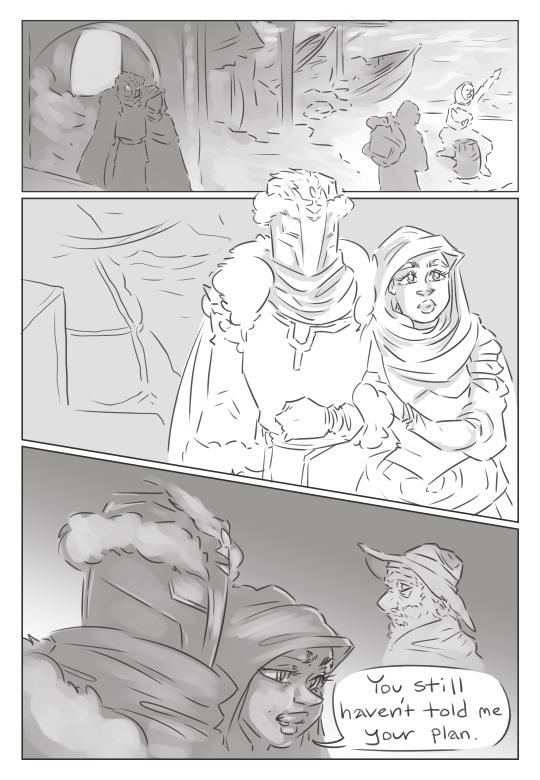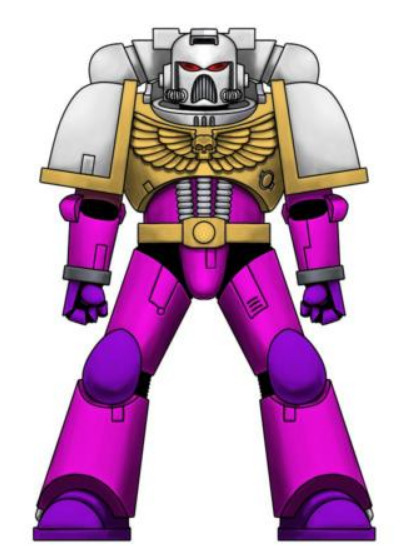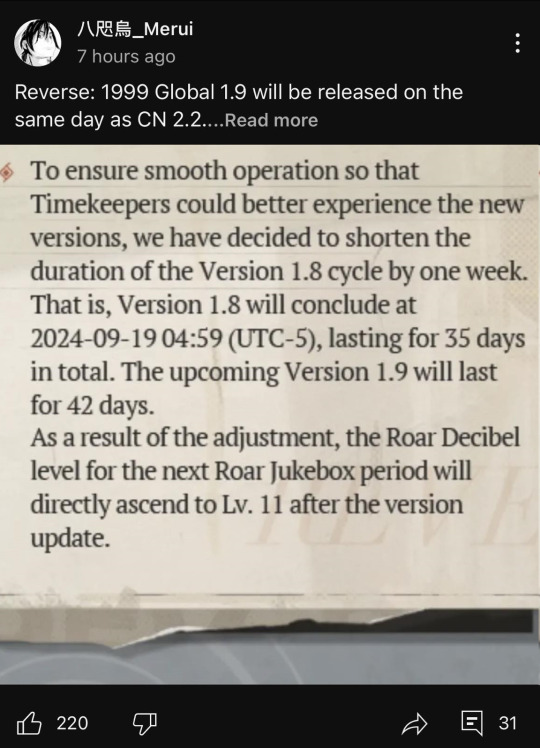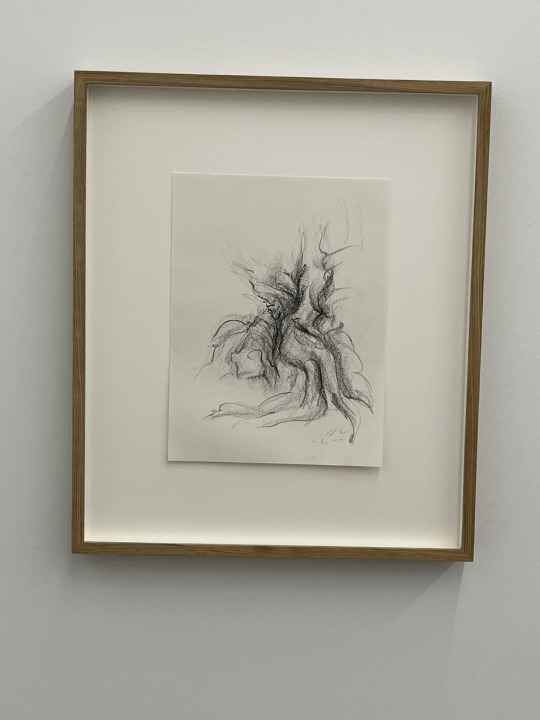#interchapter
Explore tagged Tumblr posts
Text
Shamane fathered so hard he started mothering and Hofmann mothered so hard that she started fathering. does this make sense.
#what the fuck is blud on about? i don't even know.#reverse 1999#certified storm moments#shamane#greta hofmann#i thinks its funny i've watched the entirety of chapter 6 before i even picked up chapter 5 and its interchapter lmao#r1999 moots and everyone who follows me i will be so annoying about chap 6 when it drops that you'll probably have to block me#doing a chap 6 livestream where you'll all watch me projectile sob tears
88 notes
·
View notes
Text
#this is specifically about the printing of the girl who loved tom gordon by steve king i'm reading rn#which labels page 1 as page 9#and counts all the blank interchapter pages#writing#books#poll
2 notes
·
View notes
Text
Act I Content Updates
Total Word Count: 397,252 (340,451 w/o code) Average Playthrough Length: 98,327
I’ve taken into account the past few weeks of feedback, typo/error reports and my own desire to polish up Act I before working further on the in-progress Chapter VI in order to bring you a interchapter content update! I would like to thank the many insightful reports and posts I’ve gotten on the Forum and Discord for helping to further enrich the story thus far. As always, notify me if there are any errors or mistakes with this smaller update. If there’s any areas I could touch up the new character option, please let me know as well.
All of the relevant updates are listed below. I advise you to clear your browser cache before opening the update on COG Demos due to startup edits.
Act I Changelog
New Character Customization Option: Transgender Male Character
Consentia scenes given edits to provide more clarity and insight into her character
New Family and Name Options for a Provincial Prefect and Nova Prefect.
Additional Nova related dialogue and choices added to Chapter II.
Gender Selection now modified to be less counter intuitive and less confusing.
Facial Hair choice for Male Prefects; affects Chapter II and IV dialogues.
Implemented bald choice when selecting Male Prefect hair.
Additional references for a female Seyetite Prefect who marries Julia.
Additional Legate Romance dialogue for a Consort Prefect in Chapter V.
Additional Treasury Career references in Chapter I and II.
Additional pious choices for Darius in Chapter IV.
Additional Court Venue/Senator Arrest choices in Chapter I.
Augusta's potential mismatch is revised.
Galeriae Codex Entry implemented.
Sorcerous Career description and trait revised.
Collector Career description revised.
Career Reputation changes rebalanced.
Personality Stat changes fully added through Chapter V.
Fleshed out familial letter scene in Chapter II, including with family member names.
Additional familial communication in Chapter V.
Scene List Filled In.
Official Imperial Family Tree added in Stat Screen.
"Your Family" Codex Entry, activating in Chapter II.
Numerous typos fixed and bugs stamped out.
Author's Note on the Transgender Male MC Option
I originally intended to include a transgender man character option in addition to the transgender woman character (Nova) option. However, I wasn’t able to reconcile an out and transitioning trans man with the strictures of the matriarchy. I left the “transm” variable as an artifact of that unfortunate triage.
Now, I have found a way to thread the needle. In this variant, the Trans Man Prefect is closeted, having to bury his identity deep to survive in Iudia’s hostile matriarchy. He chooses an additional name at character creation to reflect how he sees himself beneath the lies he must maintain before the world.
Corresponding text has been added to almost every file to account for a Trans Man Prefect, particularly in the Sorcerous career. Trans Male Prefect will be able to come out to a truemanced Julia when selecting your relationship type, which affects dialogue with her. There is also new significantly more dialogue added in the Castra of Chapter II, and an entirely new scenes variant involving the Legate in Chapter IV. Just as with the Nova Prefect, there will be more to come in subsequent chapters and more ways for this Prefect to both express himself and struggle for a better future.
#choice of games#cyoa game#interactive novel#wip game#shattered eagle#shattered eagle: fall of an empire#interactive fiction#if wip#hosted games#choicescript
57 notes
·
View notes
Text
a short patch timeline on reverse 1999
So I've been going back and forth for almost a year now on comprehending and helping people comprehend the timeline in Reverse: 1999 because oh my god, it's so, so convoluted that it's still taking a long time for me to even write down the information without overexplaining it. And that's just the main story.
However, I've been able to piece together the timeline events by patch and chapter to make things easier for everyone. (...unless you want me to even include the anecdotes, which is another can of worms I'd like to not open.)
However, since 2.0 forwards will be taking place after 1.9, I won't be including the patch names. But, I will put their placements in the timeline without making specific notes to avoid spoilers.
I'd like to first note that 1.6 (Notes on Shuori) has no definite placement on the timeline. The reason why is that 1.6 is personally considered a timeline anomaly; there are plot holes and information that made it difficult to deduce when it took place. (i.e. Yenisei's origins, Getian's character story, Bessmert's* presence) For now, I will leave this out.
Additionally, a lot of the character stories take place between the past and the future. Thus, the character story that chronologically takes place the earliest by far is Lucy's while the latest would be Ezra's.
—
First of all, we start with 1.8 (Farewell, Rayashki) in its entirety. From Windsong's past, to her arrival in Rayashki, to when the second "Storm" took place, and Vila and the kids needed to adjust to this new normal.
Next is Chapter 3 (Nouvelles et Textes pour Rien) and Chapter 5's interchapter. (The Star) Both the story of Vertin's becoming of the Timekeeper, and Greta Hofmann's experience with the Apeiron group are both aligned. Greta even mentions Vertin in her log after returning to the Foundation.
Afterwards we skip to 4 years later, and we're now in 1966. (Post First "Storm") Three events occur here. First, 1.1, (Theft of the Rimet Cup) then 1.3, (Journey to Mor Pankh) and then finally, the Prologue of our story. (This is Tomorrow)
Its then quite straightforward afterwards. We immediately follow up with the first 4 Chapters taking us through 1929 to late 1913. Then afterwards, we have Chapters 5-7 taking place within the first 3 weeks of January 1914, and then we're immediately taken to August 1990 at the end of Chapter 7.
I'd like to also add that within those 3 chapters, both rougelikes (Echoes in the Mountains and Series of Dusks) took place within the same time. Although, Series of Dusks ends before Chapter 7 due to Semmelweis and Lorelei leaving with the Foundation right before the "Storm" hit.
Now, in 1990, we start with 1.2 (Nightmare at Green Lake) followed by patches 2.0-2.2, all of which take place in immediate succession. And then for now, we end with 1.5. (Revival! Of the Uluru Games)
So if I put all of these in one list, it looks like this:
Notes on Shuori (1.6) - Undetermined placement
Farewell, Rayashki (1.8) - 1999+1 (1996) -> 1999+2 (1985)
Nouvelles et Textes pour Rien + The Star (Ch. 3 and Ch. 5 Interchapter) - 1999+4 (1987)
Theft of the Rimet Cup (1.1) - March 1966
Journey to Mor Pankh (1.3) - April-May 1966
This is Tomorrow (Prologue) - Jun. 3 1966 -> Feb. 14 1929
In Our Time (Ch. 1) - Feb. 14 1929
Tender is the Night (Ch. 2) - Feb. 15 1929 -> Aug. 1913
Nouvelles et Textes pour Rien (Ch. 3 - Present Time) - Aug. 25 1913
El Oro de Los Tigres (Ch. 4) - Aug. 26 -> Oct. 10 1913
Prisoner in The Cave (Ch. 5) - Dec. 24 - Jan. 4 1914
The Star (Ch. 5 - Interchapter) - Jan. 4 1914
Echoes in the Mountain (Rougelike 1) - Undetermined time, before Jan. 8 1914
E lucevan le Stelle (Ch. 6) - Jan. 6-12 1914
Series of Dusks (Rougelike 2) - Jan. 8-13 1914
Vereinsamt (Ch. 7) - Jan. 12-13 1914 -> Aug. 1990
Nightmare of Green Lake (1.2) - Sept. - Oct. 1990
Patches 2.0 - 2.2 - Sept. - Nov. 1990
Revival! Of the Uluru Games (1.5) - Jan 1991
The story can only get even more convoluted from here. As of the moment, I've been sort of working on a larger timeline to piece the entire story together, especially since we've yet to finish it before the story ends. New stories and information continuously flows in the meantime.
91 notes
·
View notes
Text
Vertin and Mesmer's dynamic analysis (Global Info Only)
Just a ramble and analysis or overview of Vertin and Mesmer throughout the story currently. Why? I think Mesmer is the only person to understand Vertin on a deep emotional level, or at the very least aware of the deep trauma Vertin struggles with and buries far away from the rest of the crew.
(Enjoy a ramble about the most traumatised characters in R1999, or the one of I guess)
Mesmer is probably has the most complete information about the Breakaway Incident out of the cast outside of Vertin, Madam Z and Constantine: both being involved with the Breakaway Incident and knowing the full extent of Constantine's meddling. After all Mesmer was the one to tell Constantine about the plan out of fear for her friends. Mesmer did not act out of malice but concern, it was Constantine manipulating the vulnerability of a child to ensure the circumstances to foster Vertin as a Timekeeper.
Why say Mesmer of all people understands Vertin on a deep emotional level? Simple, AS is the invention of the Mesmers as part of the Three Door gameplay, and we see its use shown in Book 3/4 in Vertin's induced coma.
Its clear in Book 3 that Mesmer is aware to some degree of what Vertin dreams, the jump between the conversation or Smoltin and Smolnetto over the frog vs the small time jump to when they were 12. Not only do we as players see the Breakaway Incident in full, but Mesmer to some degree as well, not just as a person present at the time.
How does this mean Mesmer understands Vertin more than anyone? Vertin is a very closed off person to begin with, sure she is very physically affectionate and you don't get 60+ people wanting to join the suitcase without a certain level of charisma - Vertin especially after the Incident keeps everyone at an emotional distance. And equally does not allow others to know her pain, its hers to bare alone.
Mesmer similarly is at this emotional distance from others and attempts to hide her pain deep inside her. The guilt of the Breakaway, the literal fact that she is a Mesmer in the first place, just like Vertin forced into a role at an early age of caring for patients in a psych ward since 12 as well as the nature of her arcane skill making her VERY aware of other arcanum fluctuations and emotional states. And Laplace isnt exactly the best place to find therapy (Kakania as a prime example).
While Vertin of course does not entirely consent to being put into a coma she does tell Mesmer "I will trust your judgement, just this once". Mutual understanding of this situation, Vertin cannot do much but put faith in others (and its too early to judge whether or not this trust is a fatal flaw).
Their general dynamic is one of mutual understanding, they are close in their own way even if to anyone outside it looks like they are just cold to each other. (Vertin requesting the Umbrellas from Mesmer, to her later receiving all Umbrellas by the interchapter, the chapter implies Mesmer herself went to Vertin to give the Umbrellas.
Summary: Vertin and Mesmer's relationship and dynamic might be the most fleshed out or the one given the most context so far, a trouble dynamic between two individuals forced into roles from an early age and shaped by trauma, a bond built of mutual understanding of the duty they must continue and oversee.
#reverse 1999#r1999#ramblings#forgor remembered#vertin#vertin reverse 1999#mesmer jr#mesmer jr r1999
109 notes
·
View notes
Text



Rogue Trader Interchapter Art
by Denis Pospelov
#imperium#rogue traders#spaceship#locations#servo skull#warhammer#warhammer 40k#warhammer 40000#40k#denis pospelov#monochrome
227 notes
·
View notes
Text


First ~ Previous ~ Next
~~~
Welcome to Chapter Nine! I intended to post a cover/interchapter piece but I just did not get it finished in time, so it'll be up early next week out of sequence <3 Love you guys, let's goooo!
33 notes
·
View notes
Text
updated deltaswap chapters 1-4
sooo i havent seen anyone make a new deltaswap take (or any deltarune aus at all really) since the release of ch 3 and 4 SO heres my ideas!!!
LIGHTNERS (that are important as of now)
kris <> susie
carol <> rudy
noelle <> dess
berdly <> jockington
(every other undertale character is swapped the same as in underswap, IE: undyne <> alphys)
DARKNERS
(this is where most changes are to the typical swaps, more info and also more interchapter swaps, per my personal opinions)
ralsei <> gerson
king <> queen
seam <> jevil
lancer <> rouxxls
spamton <> tenna
nubert <> starwalker
sweet cap n cakes <> motormouth mike(s)
elnino/lanina (they function as one character here) <> ramb
john mantle <> the knight
jackenstein <> cupwalkas
titans <> the angel
egg man <> friend
feel free to ask!! if any of these confuse u :3
#deltarune#deltaswap#undertale#underswap#fandom#DR#UT#toby fox#spamton#tenna#gerson#mr tenna#au#friend inside me#sans
25 notes
·
View notes
Note
Hi, what are some literary devices I can use to show the contents of a flashback of a non-POV character? Thank you!
Incorporating a Non-POV Character's Flashback
That's a tough one.
To clarify for others: stories can be told by an omniscient narrator--a usually unseen third-person narrator who sees all and knows all--or a POV narrator--a character in the story telling their own first-person account of what happened, or an unseen third-person narrator who is limited to one character's experience at a time. See: Choosing a Point-of-View
In a story with one or more POV narrators, you technically can't show anything to the reader that's outside the POV of any of the POV characters. So, when you have a flashback that occurs inside the head of a non-POV character, showing that to the reader is extra tricky.
The first thing to consider in this situation is the importance of showing the flashback at all. If the information contained within the flashback is so critical to the story that it must be shown, is the character experiencing the flashback not also important enough to have their own POV in the story? If not, is there any other way the relevant information can be delivered?
Alternatives to actually showing the flashback:
-- Have the flashback occur under hypnosis and have the character describe what they're seeing out loud in the presence of another POV character.
-- Have the character disorient briefly as they experience the flashback in the presence of a POV character, then have them tell the POV character what they saw/experienced after the fact.
-- Have the character start telling the story of the event to the POV character, then have them gradually slip into language that makes it clear (to the POV character and reader) that they are actually reliving the moment in their mind as they describe it. This would be similar to the hypnosis device except without hypnosis.
Actually showing the flashback of a non-POV character isn't something that really has an established device, so anything you try would be experimental and could risk confusing the reader and/or pulling them out of the story.
If you feel that showing the flashback is critical to the story (not just because you deeply want to, but because the story wouldn't make sense otherwise), yet you feel this character doesn't warrant their own POV in the story, one method you could try is just giving them a single POV chapter within which the flashback is contained. Another possibility would be including the flashback as an intercalary chapter (aka "interchapter"), which is a vignette that breaks from the rest of the narrative in that it doesn't include main characters or further the plot, but adds important background information or context. This would still be labeled as a chapter but would mainly contain the flashback along with context for who is having the flashback and why. In other words, it's something you will need to play around with and may need to do some tweaking on with beta feedback.
Have fun with your story!
•••••••••••••••••••••••••••••••••
I’ve been writing seriously for over 30 years and love to share what I’ve learned. Have a writing question? My inbox is always open!
Learn more about WQA
See my ask policies
Visit my Master List of Top Posts
Go to ko-fi.com/wqa to buy me coffee or see my commissions
96 notes
·
View notes
Text

Finally decided a name for my Emperor's Children loyalists that masquerde as sons of Ferrus Manus, the Ironsong Chapter.
This is what I am going to aim for a basic color scheme
Basic ideas about the Ironsong
They have no librarians, the OG EC viewed them as a mutation that was a flaw in the way of perfection and I think the Ironsong Chapter would agree
Their chapter master's title is Artificer. They similar to the Sons of the Gorgon have a close relationship to the Adeptus Mechanicus
The fact that they are sons of Fulgrim is only known to the ten company heads and the Chapter Master, as well as their Mechanicus allies from Deimos who watch their geneseed for taint.
They have a tidally locked homeworld, where one half is a forge world, and the other is essentially a paradise world. They view recruiting aspirants from both equally as important and always have two battle brothers inducted at once one from each half
Their chapter master rules the homeworld from a monastery in the part of the planet where the two halves meet. In the battlebarge they have, there is a throne made of old artillery pieces they have captured. They are no longer kept loaded after a friendly fire incident killed their first Chapter Master
They have friendly relations with the Iron Hands and their successors. The Ultramarines have mistaken them for chaos marines at one point and had their first interchapter incident.
The role of techmarine and chaplin have been ruled into one in this chapter
31 notes
·
View notes
Text
Once again turning to tumblr as study motivation! (Already a day behind on studying because my textbooks wouldn’t load last night)
March 11th:
Chem - Chapter 1
Bio - lesson 7
March 12th:
Chem - Chapter 2
Bio - Lesson 8
March 13th:
Chem - Chapter 3
Bio - lesson 9
March 14th:
Chem - Chapter 4
Bio - lesson 10
March 15th:
Chem - Chapter 5
Bio - lesson 11
March 16th:
Chem - Chapter Interchapter A and B
Bio - lesson 12
March 17th:
Chem - Summarize chapters 1-3
Bio - lesson 13
March 18th: bio exam
Chem - Summarize chapters 4-IAB
March 19th:
Focus on weak areas
March 20th: chem exam
3 notes
·
View notes
Text

damn. they really want us to steep in the trauma of 1.9 huh
#reverse 1999#but understandable because chapter 7 is longer than the previous one and also has an interchapter too
22 notes
·
View notes
Text










Jes Fan 'Sites Of Wounding : Interchapter' at Andrew Kreps Gallery in downtown NYC.
5 notes
·
View notes
Text
just in case this website becomes unusably dogshit, make a note that @ikroah as well as its supplementary works (the prose interchapters, etc.) are all mirrored on AO3 over here: https://archiveofourown.org/works/29570823/chapters/72677286
51 notes
·
View notes
Text
Discussing Zeno for 2.2 (major spoilers for 1.9 and onwards)
Major story spoilers for Book 8 (2.2), discussion on a certain character and their motives for the 2.0 storyline.
(I wanna discuss the literal complications of this character somewhere since all I have seen on them being discussed are thirst posts, I don't mind but there is so much to them lore wise I wanna discuss and open the floor to discussing)
Igor, or Admiral Igor had appeared in the 1.9 story where Zeno vacuum bombed Arcana into literal dust; he specifically 'confirms' the death of Arcana however even in 1.9 we know Arcana is not dead. I think alongside the anti climatic nature of it PLUS what Druvis says in the interchapter confirms she in some way survived.
What was more surprising for 2.2 was the bretrayal of Igor and most of the subordinates under him, excluding Lopera.
(If I had a penny a highly popular character by the fanbase went over to the Manus, their conversion being virtually unseen by most due to the high demand for them to be playable I would have two pennies, which isn't alot but its weird it happened twice) (this is Sophia and Igor, idk about Diggers again since his anecdote is in 2.1)
The convo between Lilya and Igor
The conversation between Lilya and Igor is also something I want to pick apart since it builds of Lilya's character I think, she isn't as blindly loyal to the Foundation as Sonetto was in the Prologue, admits there are faults in the organisation but regardless sees the good in the Foundation over the Manus. Sonetto she highlights specfically as the good in the Foundation. She sees the Foundation as the only ones able to step up to combating the Storm, the only one to oppose the Manus in any effective way.
Lilya describes Zeno as "a mindless gun, the Foundation points and Zeno shoots" (thats the perfect way to describe the relationship between the two I think).
Both Igor and Lilya do have distain for the sacrifices Zeno has made for the Foundation, the fact that in the Foundation's eyes those sacrifices are deemed as necessary. Igor laments that Zeno cannot continue at its current rate, throwing themselves at the Manus is only leading to more deaths. To this Lilya says she doesnt care.
Then Igor outright confirms Arcana is not dead, and already a red flag is present since the Foundation and everyone operates under the impression that she is. He states that if there is a miracle then there will always be people who follow after it. The incident at the Sao Paulo branch was a likely result, however Igor impresses he is more angry at the death of the officer than soldiers abandoning Zeno. Igor does confirm that Zeno existed prior to the First Storm however afterwards relations between humans and arcanists in their ranks began to deteriorate.
The convo then moves to Vertin, to Lilya tells Igor she trusts completely and Igor agrees on that point (Sonetto and Lilya do have similarities, commitment to the organisation that effectively raised them but a growing loyalty and bond to Vertin, intially build out the guilt over the Breakawy Incident but by 1.9 is the resolve to see the future and goals Vertin wants into fruition)
Igor sees the Foundation and Manus as two sides of the same coin and asks who the Timekeepe would side with, and again Lilya trusts wholehearted in Vertin's decision. Lilya questions again why have this conversation to which Igor says its his own personal interest. Then she gets arrested (wow that was not on the bingo card lol)
Conclusion: Igor sees the current progress of the Storm as a stalemate, neither side is winning and all that it results in its the meaningless sacrifice of countless lives. The death of Arcana was a turning point for Igor alongside the 8 years of virtually no progress - her survival shows that nothing has changed and if she had died the result would be the same. To continue with the Foundation's wishes would only continue the stalemate and the loss of more lives.
Convo between Urd and Igor
Urd claims not to know Igor but he claims and reaffirms to know her (even she is doesn't know him I think it is safe to say with this patch she is Urd, Besemert and the Friend from Afar, the only identity now in question is Martha but I have a theory for that later).
List of what Igor claims and says here:
He and Urd are old friends who fought alongside each other in the lead up to the Storm (who were they fighting exactly? Some proto form of Manus?)
The says the battle was the mistake and that the first Storm affected the entire world, so the next 8 had a limited ranges in comparison.
He now sees the path he fought against as the only path to pursue, the one made by Arcana to ensure a world of peace.
The Goddamn chair. Urd received it from the Foundation, possibly from the White Marble House that serves as the higher ups that did something when the red button on it was pressed. (Its clear whatever it did before cannot currently be replicated, as seen with Nala just spamming the button and nothing happening).
Igor asks what happened after she pressed the button to which she answers nothing (alright so even if she does not recognise Igor she remembers the chair, I have a feeling some form of memory loss has occurred here tbh). The he asks what happened when "you walked into that white house" (what house? The Foundation?) and she denies again about the house BUT acknowledges the chair.
The final line Igor claims her existence will change the fate of everyone.
I have a theory building for Urd and will post later but for Igor its interesting his position.
He likely had a first hand experience of the First Storm, fought for 8 years with virtually no progress to combat the Storm, now choosing to side with the Manus reluctantly as he can no longer see the Foundation as a means to stop the fighting, the deaths and the war. His relation to Urs is also a mystery (dammit he is likely the only person who could confirm if Urd is Vertin's mom)
Former Admiral Igor
It is interesting that the Foundation and Zeno would rather cover up his betrayal and instead declare him dead. He likely had high influence and popularity so declaring he had switch sides likely would have hurt morale.
Conclusion: I guess right about divisions in Zeno... And thats about it. Igor is shaping up to be a complex character for this 2.0 story and hopefully we can get more information on Urd through him, since he has provided even more clues overall in the entire game to the mystery of Urd in one conversation.
7 notes
·
View notes
Text
Finals week

Just two more days of Finals and I'll finally be able to get back into writing. I had really high expectations for finishing the coding of the first chapter this week, but I'll have to delay it until my last two final tests. After wednesday I'll disappear in my office and only emerge with the finished Chapter 1 and interchapter. Wishing everyone a good weekend and a nice start of the week, and see you all in 5 days. Hopefully, if my soul still resides inside my body...
3 notes
·
View notes